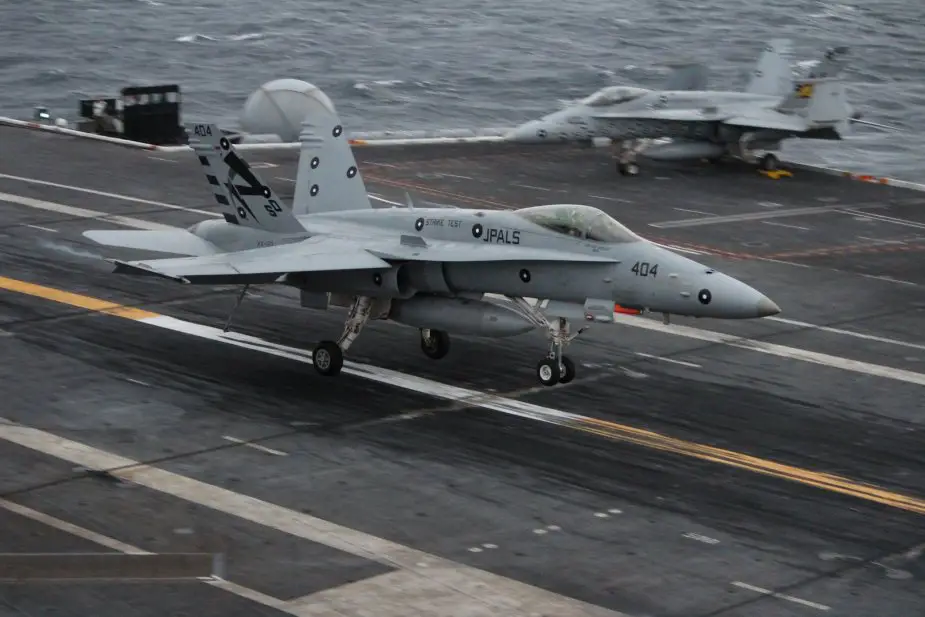Breaking news
US Navy declares Initial Operation Capability for JPALS.
According to information published by the US Department of Defense on May 18, 2021, the U.S. Navy declared initial operational capability for the Joint Precision Approach and Landing System (JPALS) on May 4, signaling the system’s ready to provide precision approach and landing capabilities to tactical carrier aircraft at sea in support of naval aviation operations worldwide.
Follow Navy Recognition on Google News at this link
 U.S. Navy conducting tests for the JPALS on an aircraft carrier using two McDonnell Douglas F/A-18C Hornets in 2013. (Picture source: U.S. Navy)
U.S. Navy conducting tests for the JPALS on an aircraft carrier using two McDonnell Douglas F/A-18C Hornets in 2013. (Picture source: U.S. Navy)
Dugard worked closely with the Naval Air Traffic Management Systems Program Office (PMA)-213 to ensure all requirements were met to demonstrate that JPALS will safely and effectively support U.S. Navy and Marine Corps aviation at sea.
The initial operational capability (IOC) was declared by Rear Adm. Gregory Harris, Director Air Warfare Division, N98, Office of the Chief of Naval Operations, following the successful installation, integration and flight certification of the first JPALS production unit aboard USS Carl Vinson (CVN 70) in December 2020. After the flight certification, the JPALS team continued working with the Navy’s operational test community to demonstrate that the F-35C could effectively conduct at-sea precision approaches to the flight deck, and that adequate manning, training and sustainment infrastructure were in place to support and sustain JPALS operations while globally deployed.
The JPALS IOC declaration is the culmination of many years of system development and testing activities that began in 2008. The JPALS team has successfully provided a critical combat capability to the U.S. Naval Fleet, delivering the IOC capability nearly a year ahead of the planned threshold while overcoming many challenges including delivering, installing, testing and certifying systems during a persistent global pandemic.
JPALS has been supporting F-35B deployments on LH-class amphibious assault ships with an early operational capability since 2016, and will now provide the all-weather, precision navigation, approach and landing capability for all F-35C deployments on CVNs as well. JPALS will also support future operations with the Navy’s unmanned MQ-25A Stingray aboard CVNs.
JPALS is a global positioning system based system that integrates with shipboard air traffic control and landing system architectures to guide fixed-wing tactical carrier aircraft with pinpoint approach and landings on nuclear aircraft carriers (CVN) and amphibious assault ships (LHA/LHD) in all weather and sea surface conditions.
The system features anti-jam protection to ensure mission continuity in hostile environments and enables precision landings in all weather and environmental conditions.
JPALS development and demonstration began in 2008 with the first JPALS aircraft carrier landing in 2013 aboard USS Theodore Roosevelt (CVN 71).
The JPALS program is a collaboration between the U.S. Navy and Raytheon.
Initial operating capability or initial operational capability (IOC) is the state achieved when a capability is available in its minimum usefully deployable form. The term is often used in government or military procurement.



























